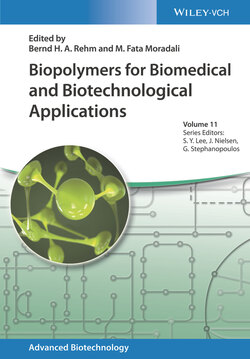Читать книгу Biopolymers for Biomedical and Biotechnological Applications - Группа авторов - Страница 16
1.4.1 Cytotoxicity
ОглавлениеIn general, cytotoxicity tests are a broad range of assays that look for the impact of a substance on individual cells grown under in vitro conditions. The test can be performed on different cell lines and can look at (qualitatively) or assess (quantitatively) different cellular endpoints. The various internationally accepted cytotoxicity assays are summarized in part 5 of the ISO 10993 series (i.e. ISO 10993‐5). All the tests usually run using the L929 mouse fibroblast cell line. Although it is possible to use other cell lines for testing, the L929 cell line is the one that has historically been used and is therefore recommended for comparison. Additionally, despite the availability of many different versions of cytotoxicity tests, the standard testing for biocompatibility of medical devices consist of either MEM elution, MTT/XTT assays, or neutral red uptake assay. Each assay has different cytotoxicity evaluation endpoints and sensitivity, so comparing results from one assay to the other has proven to be difficult.
The cytotoxicity test is a very sensitive test and is the most likely test to cause trouble with any medical device, but specifically with biopolymers. This trouble comes from the fact that some biopolymers lack the mechanical properties and stability in the extraction fluid that is used to prepare a sample for the cytotoxicity test. This lack of stability may be caused a high concentration of ions in the extraction fluid that could result in a cytotoxic response in the assay. Crosslinking can be used in the attempt to improve the results, but this can also cause potential cytotoxicity as these crosslinking agents themselves can be cytotoxic (e.g. glutaraldehyde).
Therefore, the best approach for assessing cytotoxicity of biopolymers is a risk‐based approach. As mentioned before, the cytotoxicity test is historically the most sensitive test available and is thus often used as a screening test for materials, process residuals, and the final device configuration. In the ANSI/AAMI/ISO 10993‐5 Guidance section 10, it states “Any cytotoxic effect can be of concern. However, it is primarily an indication of potential for in vivo toxicity and the device cannot necessarily be determined to be unsuitable for a given clinical application based solely on cytotoxicity data.” When elevated cytotoxicity results are seen, a risk assessment should be performed to identify the source of observed cytotoxicity. Then on, the risk assessment should evaluate the toxic potential of the material or compound to determine the clinical impact. The investigation should include a review of the procedures to determine the effectiveness of the test system, additional testing to evaluate clinical risk of the results, and then a clinical risk assessment of the toxicity using additional animal testing along with chemical analysis and toxicological assessment of the detected compounds.
Based upon examination of the biopolymer, its history of use in medical industry, inherent surface properties of the device material, surface area in contact with the user, use and contact type, duration of contact, and the route of exposure, this cytotoxicity failure may not be clinically relevant, and subsequently it can be concluded that adverse effects in patients are unlikely to develop.
